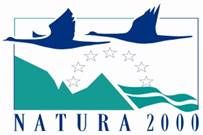mWind energy is considered a clean energy source, but produces negative impacts regarding avian mortality, including on vultures – there is evidence that locally mortality on windfarms can have population-level impacts, such is the case of Egyptian vultures in Andalusia.
Indeed, collision with windfarms has been identified as a potentially significant threat to some vulture species in the Vulture Multi-species Action Plan, a global conservation plan for 15 old world species, that was endorsed late last year by the Convention for Migratory Species (EU).
The VCF and other organisations are actively working to try to mitigate this threat – notably by researching detailed flight patterns of tagged vultures (with MAVA funding), or working with national partners to try to influence wind farm development in priority sites for vulture conservation (like the LIFE GYPCONECT area where we reintroducing bearded vultures).
It is thus with interest that we read about the good results of a long term monitoring and adequate management of a potentially killing wind farm in southern Portugal: The Barão de São João wind farm in Portugal’s Sagres region is right in the ,idle of an important migratory flyway, crossed by 5000 individuals of 30 soaring bird species every autumn, including up to 1000 griffons.
The wind farm’s licensing made it a condition the implementation of rigorous mitigation procedures, namely a Radar Assisted Shutdown on Demand (RASOD) protocol to reduce the probability of bird casualties.
A security perimeter with observers was aided by a radar system, detecting soaring birds approaching the wind farm. Turbines were to be turned-off when pre-defined criteria of intense migration or presence of threatened species were met. Turbine shutdown was operated by the wind farm staff after a request from the monitoring team, or directly by them.
Of the soaring birds crossing the wind farm, 55% were recorded at altitudes associated with high collision risk. However, due to RASOD, no soaring birds died from collisions during five consecutive autumns.
The average annual shutdown period decreased continuously after the first year (105 h) reaching only 15 h when the Monitoring Team was given direct access to shut down operations through SCADA (the remote system to monitor and control wind turbines). Shutdown period corresponded only to 0.2–1.2% of the equivalent hours in a year’s wind farm activity.
The use of radar, direct access to SCADA and cumulative experience by the Monitoring Team improved the procedure’s efficiency, allowing better judgments on the application of shutdown orders.
This paper indicated that it is indeed possible to reconcile wind energy production with the conservation of soaring birds including vultures.
You can download the paper below.


